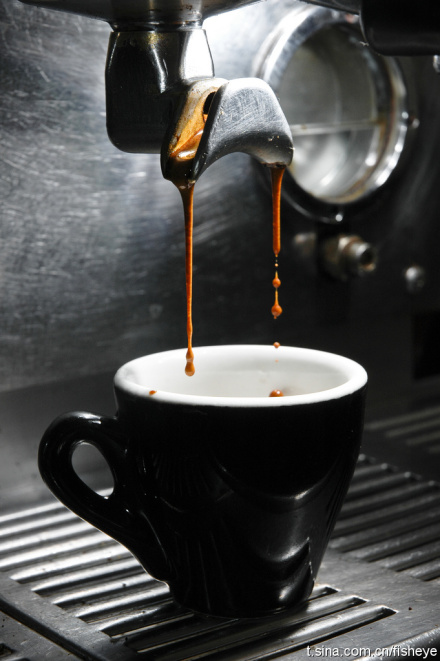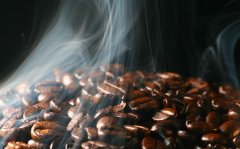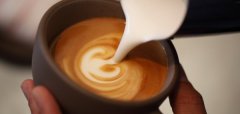Coffee is not so much a drink as a feeling.

I like to drink coffee, and I like to sit in a cafe when I want to think about something or don't want to do anything. I don't know whether I like the faint bitter taste of coffee or the slightly charred taste of coffee beans in the air of the cafe.
In fact, for those who like or love coffee, Beijing is a little confused. Coffee is romantic, elegant, educated and in a mood, so the cafe should be small, quiet, warm and whispering. There are some such places to drink coffee in Beijing, but there are not many, and it is not very convenient when you want to find coffee. More Beijing cafes are camped either at the entrance of 5A office buildings or in a corner of luxury shopping malls. It is much easier to find coffee in Shanghai than in Beijing. when you want coffee, you can walk to Huating Road, Huashan Road, Maoming South Road or any quiet road lined with mature women's tall French sycamore trees on both sides of your walkway. Just the beautiful names of the roadside cafes and the different and tasteful facades of the families will make you think that the coffee inside must taste good. Compared with Beijing, Shanghai has a longer history of coffee, a deeper culture, and a better mass base of coffee in Shanghai, so in the past two years, several books on European coffee culture have been published in China, all written by Shanghainese, for example, Zhang Yao's Coffee Map, Open the door of the Coffee Shop, and Chen Danyan's whether Coffee is bitter or not.
If you are a person who likes to look for the feeling of coffee and has not been to Europe, then it will be a pity. Although people all over the world drink coffee, only Europeans take coffee to the extreme, both in terms of culture and processing. In Europe, whether in big cities with culture and history such as Paris, Milan and Brussels, or in small cities like Nice and Padua, there are cafes on almost every street and on every corner, as long as you have a heart. You can smell the strong smell of coffee almost every moment. For them, coffee is life and air, like butter, bread and mineral water.
In real European cafes (not hamburgers, pizzeria, McDonald's), guests never say "have a cup of coffee", but name the coffee. It is said that in Vienna, which is famous for its milk coffee, waiters in famous cafes carry 20 different color codes of coffee, from light to dark. The color of the coffee served here is exactly the same as the color on the color scale you ordered.
People who like coffee need to understand the words about coffee in English, French, German and Dutch before going to Europe. Because if you don't know anything about these words, you really don't know what to do when you walk into the big supermarkets in Europe and face the coffee with all kinds of color packages and captions on the shelves. Whether you choose coarsegrind, mediumgrind, finegrind, fine distillation and powder grinding has a lot to do with the way you brew coffee when you buy it home. Whether you buy coffee after dinner (Af?terDinner), decaffeinated coffee (Decaffeinated), or Italian espresso (Espresso) depends on your hobby. You know, Polish Coffee (Paulig) in Finland and Duval in the Netherlands. DonweEgberts coffee is a good brand of coffee.
Of the hundreds or more ways of making coffee in the world, none can be called the best. Everyone has his or her own preference. Sometimes coffee is not so much a drink as a feeling.
Important Notice :
前街咖啡 FrontStreet Coffee has moved to new addredd:
FrontStreet Coffee Address: 315,Donghua East Road,GuangZhou
Tel:020 38364473
- Prev

The Coffee uprising unveiled the Storm of the European Revolution
The coffee ban in the city of Pyle in Siverfarde, Germany, was not well implemented, and everyone drank coffee as usual, until one day the Duke suddenly announced a strengthened law banning import license. all stores and cafes with coffee stocks have been closed. Some citizens who had no intention of repenting and continued to drink coffee were detained and sentenced to hefty fines, even for those who were banned from buying and selling coffee.
- Next

The first coffee spread to Japan was Nagasaki in the Yuanlu period.
The first coffee spread to Japan was Nagasaki in the Yuanlu period. And people officially accepted it from the Meiji era. When coffee shops in Western Europe opened one after another, the literature and art of coffee culture were in bloom, while Japan was in the midst of a strict policy of locking countries in the Edo era. At that time, the first drink coffee was set up at the Dutch store on the island of Nagasaki (1641).
Related
- Beginners will see the "Coffee pull flower" guide!
- What is the difference between ice blog purified milk and ordinary milk coffee?
- Why is the Philippines the largest producer of crops in Liberia?
- For coffee extraction, should the fine powder be retained?
- How does extracted espresso fill pressed powder? How much strength does it take to press the powder?
- How to make jasmine cold extract coffee? Is the jasmine + latte good?
- Will this little toy really make the coffee taste better? How does Lily Drip affect coffee extraction?
- Will the action of slapping the filter cup also affect coffee extraction?
- What's the difference between powder-to-water ratio and powder-to-liquid ratio?
- What is the Ethiopian local species? What does it have to do with Heirloom native species?

